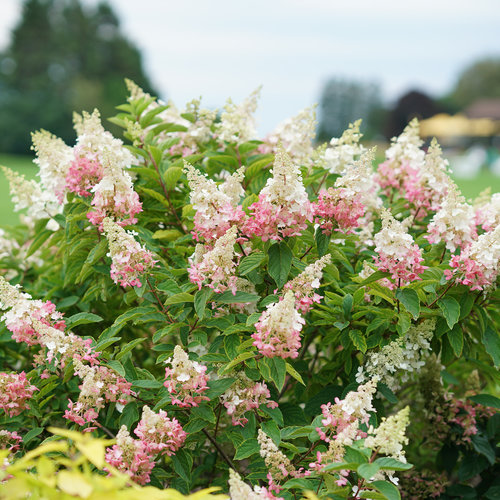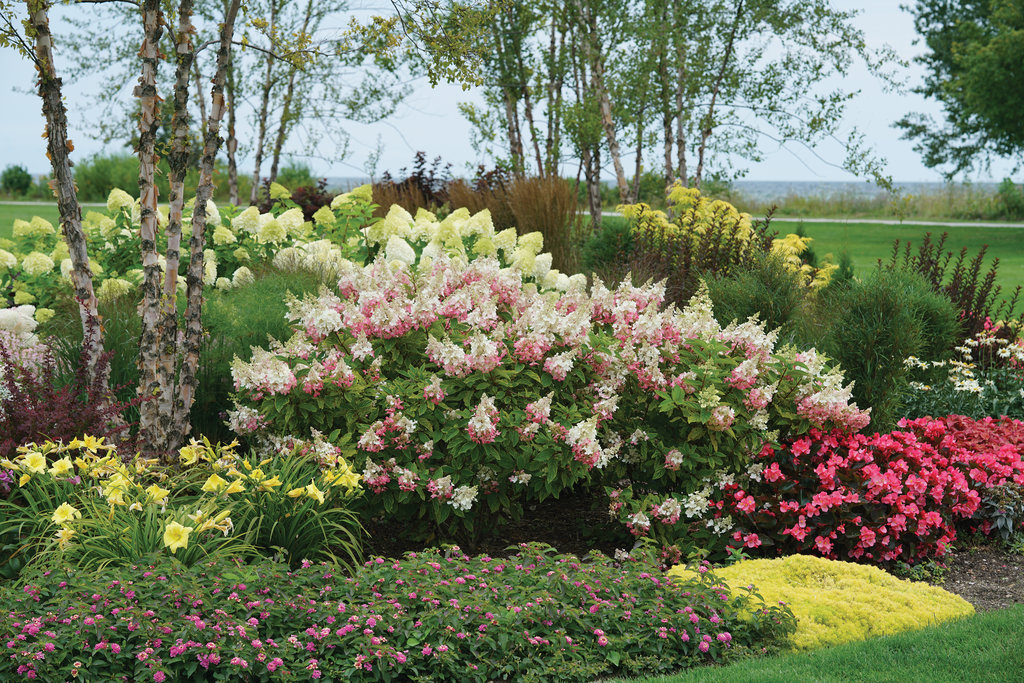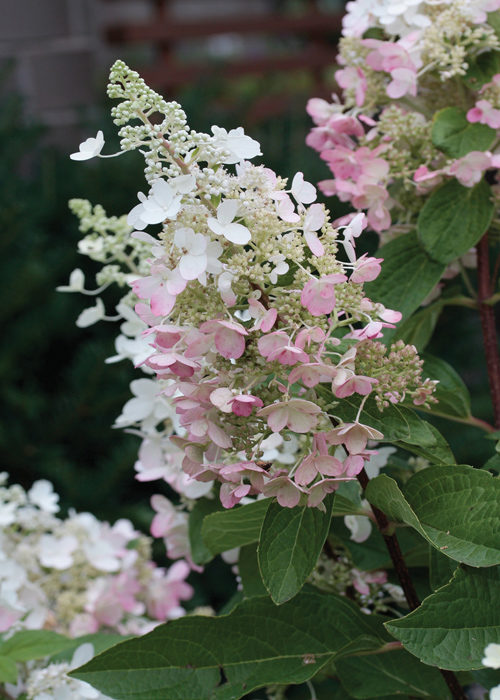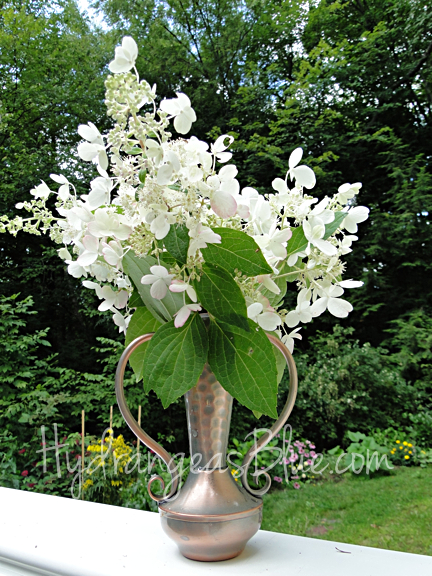Pinky Winky Hydrangea: The Showstopper Shrub Of The Summer
Pinky Winky Hydrangea: The Showstopper Shrub of the Summer
If you're looking for a showstopping shrub to add to your garden, look no further than the Pinky Winky hydrangea. This stunning plant is known for its large, pink and white flowers that bloom from summer to fall. Pinky Winky hydrangeas are relatively easy to care for and can tolerate a variety of soil conditions and light levels. They are also relatively pest- and disease-resistant.
In this blog post, we will discuss the following:
- The Pinky Winky hydrangea's key features
- How to plant and care for a Pinky Winky hydrangea
- How to deadhead a Pinky Winky hydrangea
- How to overwinter a Pinky Winky hydrangea
- Companion plants for Pinky Winky hydrangeas
Key Features of the Pinky Winky Hydrangea
- Pinky Winky hydrangeas are large shrubs that can grow up to 6 feet tall and wide.
- The flowers are borne on long, upright stems and can reach up to 12 inches in diameter.
- The flowers start out as creamy white and gradually turn pink as they mature.
- Pinky Winky hydrangeas bloom from summer to fall.
- The leaves are dark green and oval-shaped.
- Pinky Winky hydrangeas are hardy in USDA zones 4-8.
How to Plant and Care for a Pinky Winky Hydrangea
- Plant Pinky Winky hydrangeas in full sun to partial shade.
- The soil should be well-drained and slightly acidic.
- Water Pinky Winky hydrangeas regularly, especially during the first year after planting.
- Fertilize Pinky Winky hydrangeas in spring with a balanced fertilizer.
- Deadhead Pinky Winky hydrangeas after flowering to encourage more blooms.
- Overwinter Pinky Winky hydrangeas in a sheltered location if you live in a cold climate.
How to Deadhead a Pinky Winky Hydrangea
- Deadheading is the process of removing spent blooms. This will encourage the plant to produce more flowers.
- To deadhead a Pinky Winky hydrangea, simply pinch off the spent blooms at the base of the flower cluster.
- You can deadhead Pinky Winky hydrangeas at any time during the flowering season.
- Deadheading will not harm the plant and will actually help it to look its best.
How to Overwinter a Pinky Winky Hydrangea
- If you live in a cold climate, you will need to overwinter your Pinky Winky hydrangea.
- To do this, simply move the plant to a sheltered location where it will not be exposed to freezing temperatures.
- You can also mulch around the base of the plant to help insulate it from the cold.
- In the spring, once the danger of frost has passed, you can move your Pinky Winky hydrangea back to its original location.
Companion Plants for Pinky Winky Hydrangeas
- Pinky Winky hydrangeas look great when planted with other shrubs and perennials.
- Some good companion plants include:
- Hostas
- Ferns
- Foxglove
- Coral bells
- Daylilies
- Lilacs
- Roses
Pinky Winky hortensia is a beautiful, two-toned hydrangea that blooms from late summer to fall. The flowers start out white and gradually turn pink as the season progresses. Pinky Winky hortensia is a hardy plant that can tolerate full sun or partial shade. It prefers moist, well-drained soil. Pinky Winky hortensia is a relatively easy plant to care for and can be grown in most gardens.
If you're interested in learning more about pinky winky hortensia, I recommend visiting . This website has a wealth of information about the plant, including its history, care requirements, and pest and disease resistance. You can also find photos of pinky winky hortensia in bloom, as well as tips on how to grow it in your own garden.
FAQ of pinky winky hortensia
- How much sun can Pinky Winky hydrangea take?
Pinky Winky hydrangea can tolerate full sun to part shade. In hot climates, it is best to plant it in a location that receives some afternoon shade. The plant prefers moist, well-drained, and fertile soil.
- What is the color of Pinky Winky hydrangea?
Pinky Winky hydrangea blooms in white to light pink flowers. The color of the flowers can vary depending on the soil pH. In acidic soil, the flowers will be pinker, while in alkaline soil, the flowers will be whiter.
- How tall does Pinky Winky hydrangea grow?
Pinky Winky hydrangea can grow up to 6 feet tall and 4 feet wide. It is a fast-growing plant and can reach its full size in about 3 years.
- How do I care for Pinky Winky hydrangea?
Pinky Winky hydrangea is a relatively low-maintenance plant. Water it regularly, especially during hot, dry weather. Fertilize it once a year in the spring with a balanced fertilizer. Prune it in the late winter or early spring to shape it and remove dead or damaged branches.
- What are some common pests and diseases that affect Pinky Winky hydrangea?
Pinky Winky hydrangea is susceptible to a few common pests and diseases, including aphids, spider mites, and powdery mildew. Aphids can be controlled with insecticidal soap or neem oil. Spider mites can be controlled by washing the leaves with a strong stream of water or by using an insecticidal miticide. Powdery mildew can be prevented by watering the plant in the morning so that the leaves have time to dry before nightfall. If powdery mildew does occur, it can be treated with a fungicide.
Image of pinky winky hortensia
- Pinky Winky Hydrangea. This image shows a large bush of pinky winky hydrangeas in full bloom. The flowers are a light pink color with a darker pink center.

- Pinky Winky Hydrangea in Pot. This image shows a single pinky winky hydrangea plant in a pot. The plant is in full bloom and the flowers are a light pink color.

- Pinky Winky Hydrangea in Garden. This image shows a pinky winky hydrangea plant in a garden. The plant is surrounded by other flowers and plants. The flowers are a light pink color.

- Pinky Winky Hydrangea Closeup. This image shows a closeup of the flowers of a pinky winky hydrangea plant. The flowers are a light pink color with a darker pink center. The petals are slightly ruffled.

- Pinky Winky Hydrangea in Vase. This image shows a bouquet of pinky winky hydrangea flowers in a vase. The flowers are a light pink color and are arranged in a loose bouquet.

Post a Comment for "Pinky Winky Hydrangea: The Showstopper Shrub Of The Summer"